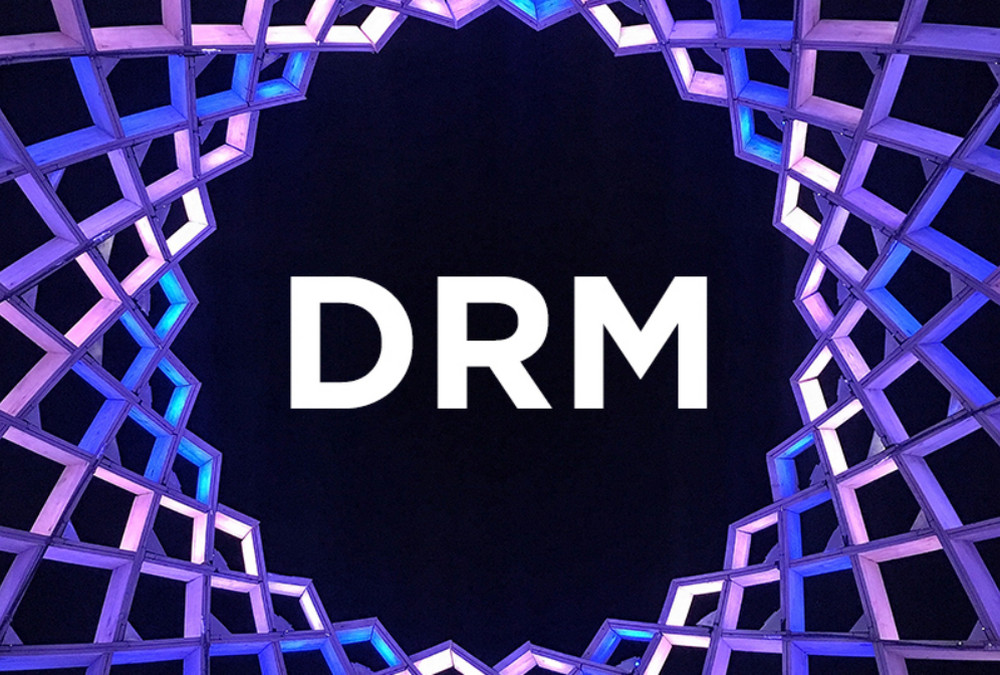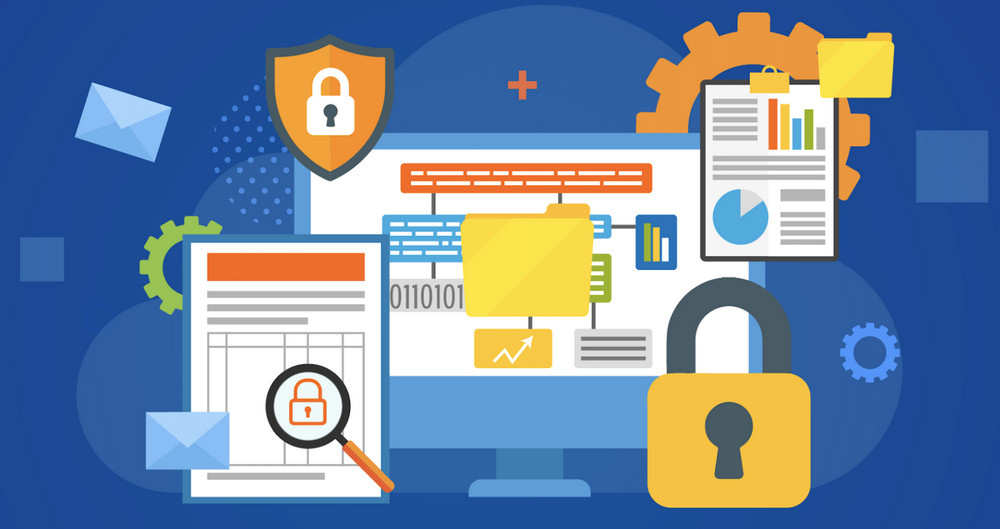The Future of Digital Content Security with Sigma Multi-DRM. The increasing prominence of digital content has made content security a crucial concern for providers. Sigma Multi-DRM presents itself as a viable solution by offering multiple levels of protection against piracy and unauthorized entry. This article explores the future of digital content security with Sigma Multi-DRM, highlighting its benefits and considering potential drawbacks.
Sigma Multi–DRM offers many users many benefits, including flexibility in accessing content, maximum data security and optimal user experience, and saving time while enjoying protected content.
Advantages of Sigma Multi-DRM with Digital Content
Sigma Multi-DRM offers several advantages in the realm of digital content security. Firstly, it provides robust protection against piracy and unauthorized access by employing multiple layers of security. This multi-layered approach significantly enhances the overall effectiveness of content security measures.
Secondly, Sigma Multi-DRM supports a wide range of popular streaming formats and devices, ensuring compatibility and seamless delivery of protected content to diverse audiences. This flexibility allows content providers to reach a larger user base without compromising security standards.

Furthermore, Sigma Multi-DRM incorporates advanced encryption algorithms and secure key management systems, further strengthening the security of digital content. These technologies help safeguard valuable assets by preventing unauthorized copying, redistribution, and tampering.
Moreover, Sigma Multi-DRM offers comprehensive analytics and reporting capabilities. Content providers can access detailed usage data and insights, enabling them to make informed decisions regarding content distribution, licensing, and rights management. This data-driven approach enhances strategic planning and optimizes revenue generation.
Lastly, Sigma Multi-DRM provides a user-friendly experience for consumers. With seamless integration across various platforms and devices, users can enjoy protected content with minimal disruptions or technical obstacles. This convenience contributes to a positive user experience, fostering customer satisfaction and loyalty.
Overall, the advantages of Sigma Multi-DRM encompass strong security measures, compatibility with various platforms, advanced encryption technologies, comprehensive analytics, and a user-friendly experience.
Thu Do Multimedia digital content protection solution
Our solution lets OTT businesses quickly launch monetized services without worrying about how to meet content owner security requirements.
Runs on all platforms and devices
Sigma Multi-DRM is designed to run on all platforms and devices. Ensuring seamless content playback across multiple devices. Whether you own a computer, a mobile smartphone, a tablet, or a smart TV, Sigma Multi-DRM enables you to access and enjoy protected content on any device of your choice. This platform and device compatibility offer flexibility and convenience, allowing users to consume digital content wherever and whenever they prefer.
Quick deployment
It seems like you’re referring to Sigma DRM (Digital Rights Management). Which appears to be a solution designed to help deploy content protection quickly and efficiently. MPEG-DASH (Dynamic Adaptive Streaming over HTTP) and HLS (HTTP Live Streaming) are indeed common streaming protocols used for delivering multimedia content over the internet.
Here’s a brief breakdown:
Sigma DRM:
Digital Rights Management (DRM): DRM is a technology used to protect digital content by controlling access to it. It ensures that only authorized users can access the content and prevents unauthorized copying or redistribution.
- Sigma DRM: This specific DRM solution likely provides a set of tools and services to implement digital rights management for multimedia content.
MPEG-DASH:
Dynamic Adaptive Streaming over HTTP (DASH): MPEG-DASH is a standardized adaptive streaming protocol for delivering multimedia content over the internet. It enables high-quality streaming by adjusting the quality of the video in real time based on the viewer’s device and network conditions.

HLS:
- HTTP Live Streaming (HLS): HLS is another streaming protocol commonly used for delivering audio and video over the internet. It works by breaking the overall stream into a sequence of small HTTP-based file downloads.
In the context of quick deployment. It suggests that Sigma DRM is designed to integrate seamlessly with these widely used streaming protocols. Allowing for a faster and more efficient implementation of content protection. This is important for companies and content providers who want to ensure their digital content is secure and accessible only to authorized users.
If you have specific questions about Sigma DRM or if you need more detailed information, it would be best to refer to the official documentation or contact the provider directly for the most accurate and up-to-date details.
Easy to scale
The statement you’ve provided suggests that the solution you’re referring to is designed to be easily scalable to accommodate rapid growth in customer base. Here are some key points related to easy scalability in a service:
Flexible Architecture:
A scalable solution often features a flexible architecture that allows for easy expansion. This flexibility can involve modular components that can be added or adjusted to handle increased demand.
Adaptability to Growth:
The solution is designed to adapt seamlessly to the growth of your customer base. This is particularly important for businesses and services that anticipate a rapid increase in users.
Resource Management:
Scalability involves efficient management of resources, ensuring that the system can handle increased workloads without compromising performance. This may include optimizing hardware, software, and network resources.
Load Balancing:
Load-balancing techniques may be employed to distribute incoming network traffic across multiple servers. This helps prevent any single server from becoming a bottleneck and ensures even utilization of resources.
Automated Scaling:
In some cases, the solution may offer automated scaling capabilities. Where resources are automatically provisioned or de-provisioned based on the current demand. This automation helps maintain optimal performance without manual intervention.

Cloud Integration:
Cloud computing services are often leveraged for scalability. Solutions that can seamlessly integrate with cloud platforms allow businesses to scale resources up or down based on demand.
Performance Monitoring:
Scalable solutions typically include robust performance monitoring tools. This allows for real-time tracking of system performance and helps identify areas that may require additional resources.
Cost-Effective Scaling:
The solution should cost-effectively enable scaling, ensuring that resources are allocated efficiently to meet the demand without unnecessary expenses.
For businesses experiencing rapid growth, having a scalable solution is crucial to maintaining a positive user experience and ensuring that the infrastructure can handle increased loads without significant disruptions. It’s always advisable to consult the documentation or reach out to the provider for specific details on how scalability is implemented in a particular solution.
High security
We use highly secure standards and algorithms like CENC (Common Encryption), and AES-128 (Advanced Encryption Standard) to protect your content during transferring and local storing.
CENC (Common Encryption):
- Common Encryption (CENC): CENC is a standard that provides a common, interoperable encryption scheme for various DRM (Digital Rights Management) systems. It allows content providers to encrypt their content once and deliver it to multiple DRM systems without needing multiple encryptions. This ensures a more streamlined approach to content protection.
AES-128 (Advanced Encryption Standard):
AES-128: AES-128 is a widely used symmetric encryption algorithm. It is considered highly secure and is part of the Advanced Encryption Standard established by the U.S. National Institute of Standards and Technology (NIST). AES-128 uses a 128-bit key for encryption and decryption processes.
Key points related to the security features mentioned:
- Encryption during Transfer: The use of CENC and AES-128 indicates a commitment to securing content during the transfer process. This is crucial for preventing unauthorized access or interception of the content during transmission over networks.
- Local Storage Protection: The reference to protecting content during local storage suggests that security measures extend beyond transmission. Once content reaches its destination, such as on a user’s device or a server, it remains protected through encryption, making it difficult for unauthorized parties to access or tamper with the stored content.
- Industry Standards: The use of well-established standards like CENC and AES-128 is a positive sign, as these are widely recognized and trusted in the field of digital content protection. Adhering to industry standards enhances compatibility and interoperability.
- Robust Encryption: AES-128 is known for its robust encryption capabilities. It provides a high level of security, making it computationally infeasible for attackers to decrypt the content without the appropriate key.
- Comprehensive Security: The combination of CENC and AES-128 reflects a comprehensive approach to security, addressing both the need for interoperability (CENC) and strong encryption (AES-128).
Businesses and content providers need to prioritize security, especially when dealing with sensitive digital content. Understanding the encryption standards and algorithms used in a system is a key aspect of ensuring the protection of digital assets.
Simple integration
Can easily integrate with different DRM platforms such as PlayReady, FairPlay, Widevine, and Sigma DRM.

PlayReady:
PlayReady is a DRM technology developed by Microsoft. It is widely used for securing digital content, including streaming media and downloadable files. Integration with PlayReady suggests compatibility with Microsoft’s DRM ecosystem.
FairPlay:
FairPlay is Apple’s DRM technology used to protect content on its platforms, such as iOS devices and Apple TV. Integration with FairPlay indicates compatibility with Apple’s digital content protection standards.
Widevine:
Widevine is a DRM technology owned by Google. It is commonly used to protect content on the Android platform and is also integrated with various web browsers. Compatibility with Widevine implies support for securing content on a wide range of devices and platforms.
Sigma DRM:
As mentioned earlier, Sigma DRM is a solution designed for digital rights management. The ability to integrate easily with Sigma DRM suggests a flexible approach to securing digital content using the specified DRM technology.
Key points related to the simplicity of integration:
- Interoperability: The ability to integrate with different DRM platforms suggests a commitment to interoperability. This is essential for content providers who want to reach audiences across various devices and ecosystems.
- Streamlined Implementation: Simple integration implies that the process of incorporating the DRM solution into an existing system or workflow is straightforward. This can save time and resources for businesses looking to deploy digital content protection quickly.
- Developer-Friendly: A solution that emphasizes simple integration is likely designed to be developer-friendly, providing clear documentation, APIs (Application Programming Interfaces), and support to facilitate the integration process.
- Multi-Platform Support: Supporting multiple DRM platforms means that the solution is adaptable to diverse environments, including Microsoft, Apple, Google, and other ecosystems, providing a more comprehensive approach to content protection.
For businesses seeking to protect digital content across different platforms and devices, the ability to integrate seamlessly with various DRM technologies is a crucial aspect of selecting a robust and flexible digital rights management solution.
Cost savings
Hosting a DRM solution can be costly and complex. Therefore we’ve already dealt with the complex process and papers, to help you save time and costs.
Complex Process and Papers:
The mention of dealing with the complex process and papers suggests that the provider has taken steps to simplify and streamline the implementation of the DRM solution. This could involve handling legal and administrative aspects, such as licensing and compliance, on behalf of the user.
Time Savings:
By addressing complex processes, the solution aims to save time for the user. This is particularly valuable for businesses that want to deploy a DRM solution efficiently without spending excessive time on administrative tasks.

Cost Reduction:
Hosting a DRM solution can indeed be resource-intensive in terms of infrastructure, maintenance, and operational costs. The statement suggests that the provider has taken measures to optimize these aspects, leading to potential cost reductions for the user.
Resource Efficiency:
The emphasis on saving costs indicates a focus on resource efficiency. This could involve utilizing cloud services, optimizing hardware requirements, and minimizing the need for additional resources to run and maintain the DRM infrastructure.
Outsourcing Complexity:
The provider appears to have taken on the responsibility of dealing with the complexities associated with DRM implementation. This outsourcing of complexity can be advantageous for users who prefer a more hands-off approach to certain administrative and technical tasks.
Total Cost of Ownership (TCO):
Beyond the initial setup, a DRM solution’s total cost of ownership includes ongoing expenses. The statement suggests that the provider has considered not only the upfront costs but also the long-term expenses associated with hosting and managing a DRM solution.
Scalability for Cost Efficiency:
A well-designed DRM solution should offer scalability, allowing users to adjust resources based on demand. This scalability can contribute to cost efficiency by ensuring that users only pay for the resources they need, especially during periods of increased demand.

Transparent Pricing:
Clear communication about saving costs implies transparent pricing structures. This transparency is beneficial for users, as it allows them to understand the financial implications of implementing and maintaining the DRM solution.
It’s important for users to carefully evaluate the specifics of cost savings claims and consider factors such as the scale of their operations, the provider’s pricing model, and the overall efficiency of the DRM solution in meeting their content protection needs.
What is The Future of Digital Content Security
The provided text emphasizes the significance of Multi-DRM (Digital Rights Management) in shaping the future of digital content security. Here are key points from the statement:
Growing Demand for Digital Content:
The text acknowledges the increasing demand for digital content, highlighting the need for robust security solutions. Protecting valuable assets becomes a critical concern as more content is distributed digitally.
Multi-DRM as a Key Player:
Multi-DRM is positioned as a major player in the future of digital content security. This suggests that a one-size-fits-all approach may not be sufficient, and a multi-layered DRM strategy is seen as essential for comprehensive content protection.
Comprehensive Security Layers:
Multi-DRM is praised for its ability to provide multiple layers of security. This implies a holistic approach to protecting digital content, addressing various potential vulnerabilities and threats.
Compatibility Across Devices and Platforms:
The text highlights the importance of Multi-DRM’s compatibility with different devices and platforms. This versatility is crucial as content is accessed on a wide range of devices, including computers, smartphones, tablets, and smart TVs.

Ease of Management:
The ease of managing Multi-DRM solutions is emphasized. This is a key consideration for content providers, as efficient management contributes to a smoother workflow and reduces the operational burden.
Protection Against Piracy and Unauthorized Access:
Multi-DRM is presented as an essential solution for content providers seeking to protect their assets against piracy and unauthorized access. This indicates that Multi-DRM is not only about preventing unauthorized copying but also addressing broader security concerns.
In conclusion, the text emphasizes that Multi-DRM is not just a current solution but is poised to be crucial in meeting the evolving challenges of digital content security in the future. Its adaptability, comprehensive security features, and compatibility with various devices position it as a strategic choice for content providers looking to safeguard their valuable digital assets.
Hopefully through the article The Future of Digital Content Security with Sigma Multi-DRM above. Bring readers useful information. To learn more about this solution, please refer to the website: thudomultimedia.com
See more articles:


Recent Comments